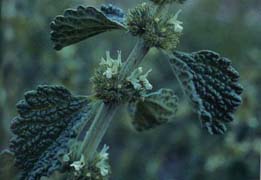Laura Donohue
Healing Gardens
31.January.2007
Winter Twigs and Critical Thinking
This last week, I was working at my work-study position as a nursery worker at Sound Native Plants, potting bare-root native plants. These little trees and shrubs that we were potting were not much more than twigs and roots. I looked at one, and wondered aloud if it was Bigleaf Maple (Acer macrophylum). It wasn’t, it was Oregon Ash (Fraxina latifolia). I know nearly all of the common trees and shrubs of this area during winter time, but not this one. How do I know them, and why did I just recognize this tree as an opposite leaved tree that I didn’t recognize?
The truth is that I have taken winter twig identification lessons, but haven’t retained very much of the critical knowledge. I just recognized alder as alder, maple as maple, willow as willow, rose as rose. I have climbed them, creeped through thickets of them, made medicine from them, ate their buds and flowers, gathered epiphytes from their limbs, seen their silhouettes on the horizon, smelled their wood, peeled back their rotted bark, and waited for the first flowers and yellowing leaves. Things run through my head like “alder has this white lichen (unknown name) with reproductive elements (unknown term) that resemble little craters”, “the bark of cedar is smooth when quite young without moss, becoming red striated and stripy when older, and deeply weathered and grayish when old growth”. I have seen these trees over the seasons. Elderberry has prominent lenticels: how do I know?--Because I learned the term lenticel from looking at elderberry branches and calling the pores stomata. Ash however I do not have much of an experiential relationship with—which is key.
Critical thinking, knowing to look for certain characteristics (such as the shape of a bud-scar) helps me recognize things that I do not know what they are, and confirms the identification of what I see. As an experiential botanist however, I need to be aware that my memory is not crystalline, and I can over time forget the key identification characteristics that helped me learn species in the first place. I recognize alder twigs immediately, especially if there is a female cone present, but totally forgot that they had raised buds.
I am thinking that plant ID would be similar within a traditional community. The more one used and lived with a plant, the more it became immediately recognizable. The more different uses people had for different species and subspecies of plants, the more different types would be recognized, and names given. There might even be different names for different ages or stages of plants, because experientially they have a different appearance or effect. For example, a young cedar tree suitable for bark harvesting might have a different name than an old growth one suitable for canoe or plank harvesting.
Last week at the Identity forum, I spoke about how meaningful it was for me to lead my first “Forest Walk” for CENSE (Center for Environmental and Natural Skills Education), back then the “Freaks of Nature”. The group would have fizzled away and disappeared if I hadn’t shown up, and was really nervous, but taught what I knew about then: forest succession. As I led my first (small) group, something physically flowed through me with power and zest. Not only did I discover my life’s passion, but I had the immediate responsibility to start doing it.
My role as a leader has been experiential. I have expanded my knowledge of many areas of my training as a naturalist, and have learned things because I needed to know them to lead our group. Some people who come to our group get turned off by the unscientific nature of the knowledge and skills that we teach. If someone knows better the term for the lichen reproductive organs that I am pointing to as a identification characteristic of alder, then by all means, share it, but I am still going to point to those “thingies” when I do not remember what they are called because seeing a forest of alders before your eyes and understanding their role in succession is more important in my mind than getting hung up about whether one knows exactly all of the scientific terms for the species and relationships that one observes.
However, as an adult communicating environmental knowledge to other adults, knowing exact terms and thinking critically helps in three very important aspects. First, critical thinking adults will become jaded and think you do not know what you are doing if you are seen stumbling over terms: knowing species epithets imbues trust for what else you would like to share (including experiential knowledge) in a very real way. Second, you assist who you are conversing in their own learning, by giving them at least a genus name or specific descriptors so they can conduct their own research later. Third, critical thinking assists you when you are in a hurry so that you think about what you are doing so that you don’t look like a dumb-ass for gathering Vine Maple (Acer circinatum) instead of Red Elderberry (Sambuca recemosa) in a rush.
My quest as a naturalist and environmental educator prompts me to learn how to live in and communicate in both of these paradigms fluently.
